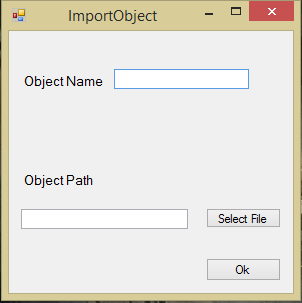This was my final project for Game AI. I was on a team of three programmers consisting of Evan Schipellite, Paul Kubik, and myself. We decided to try and create a flashlight game with networking, sharers and AI for players and ghost for this 5 week project. We decided to use C# with XNA because we had already learned how to do networking in XNA for our game networking course. For this project I primarily worked on the level editor, the flash light effect, and the AI for the player.
For the flashlight I created a triangular light in front of the player that gets darker based on the distance from the player. I looked at this source to create the triangle effect and this guide to create the differed lighting effect. I also wrote a simple blender that uses the brightest light between all the players flash lights. This way there is not a darker spot in the middle of your flashlight from another player. I wanted to go further than this by making the flashlight stop at walls. I had several ideas on how to approach it but due to time constraints I decided that it was better to start focusing on the AI.
In this video I have the player (Jake) controlled by the AI to show off the player AI. The player AI has 4 states searching a room, opening an object, avoiding a ghost, and moving to a room.
In the searching a room state the player moves randomly around a the room. There is a set amount of time that a player searches a room. When this time runs out he will go to the move to room state. This works generally well but for smaller rooms it does not look right. It would be better if we scaled it based on the room size. While he is searching the room if he finds an object he will go to the open object state, and if he sees a ghost he will go to the avoid ghost state.
In the open object state the player moves to the object that he saw, rotates towards the center of the object, and opens it. If during this time he sees a ghost he will go to the avoid ghost state. Otherwise, he will return to the searching room state after he finds the object.
In the move to room state the player moves to a random adjacent room that the player hasn't been in yet. This way the player doesn't constantly search the same room. The player changes to the search room state when he gets to his desired room. If he spots a ghost on the way, however, he changes to the avoid ghost state.
In the avoid ghost state the player will choose a random adjacent room to move to. This is not the best thing because it can cause the player to run into the ghost instead of run away but given the time constraints this is what we decided to do. The player changes to the searching state after arriving in the randomly chosen room.
If we had more time some of the things we would have liked to improve is some of the AI for both the player and the ghost as well as making the flashlight not go past walls. In the avoid ghost state it would be better if the player choose a path that would avoid the ghost as well as leave the room. Currently the ghost can see players through walls. It would be worth limiting the ghost to only seeing what is within the room that they are in. Given that this was a 5 week project the overall scope for a networked game with AI was a bit ambitious. Considering the time period we are happy with what we were able to get done and enjoyed exploring how AI, networking and sharers work in a game together.
Flashlight Game Download










